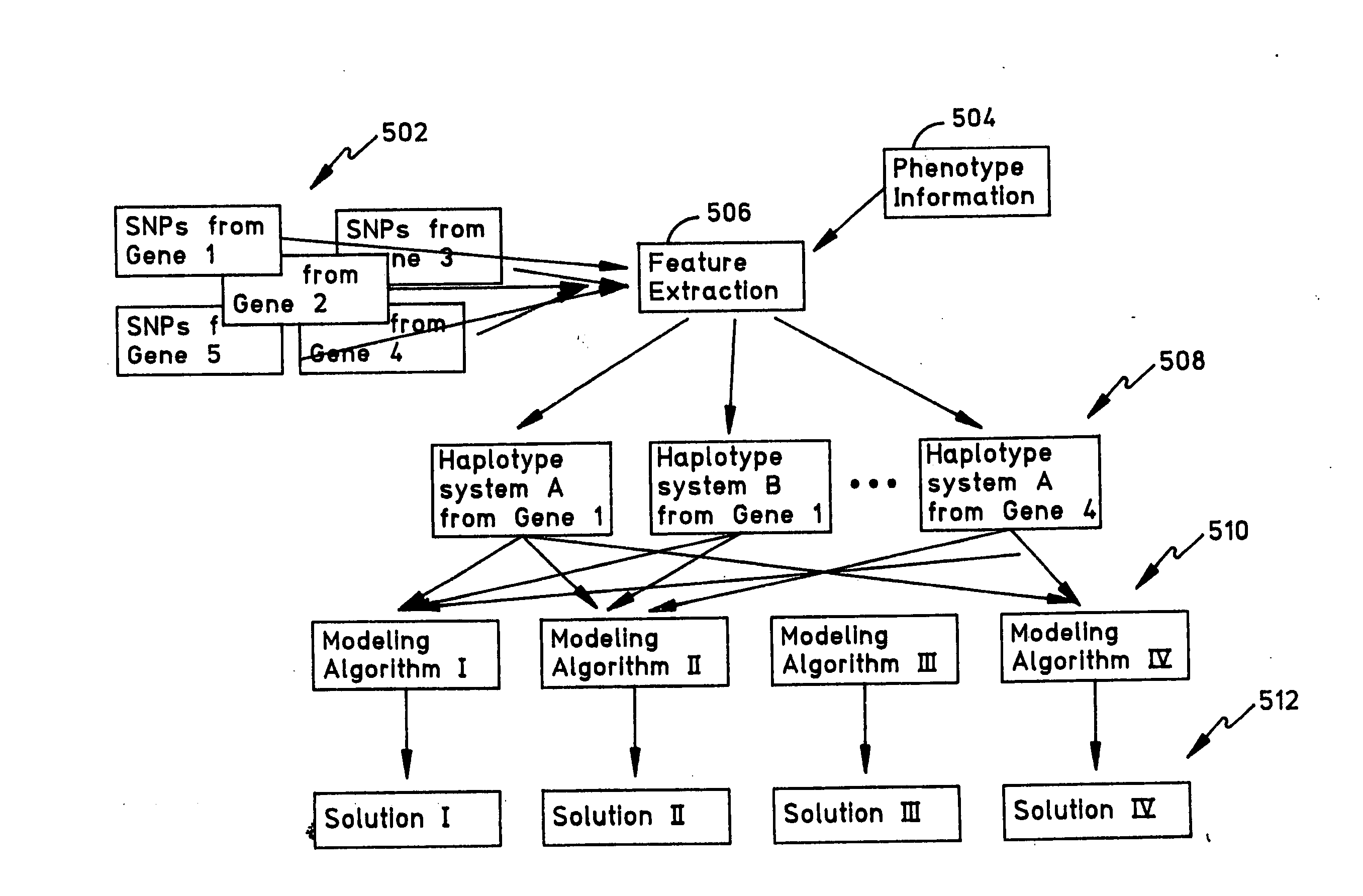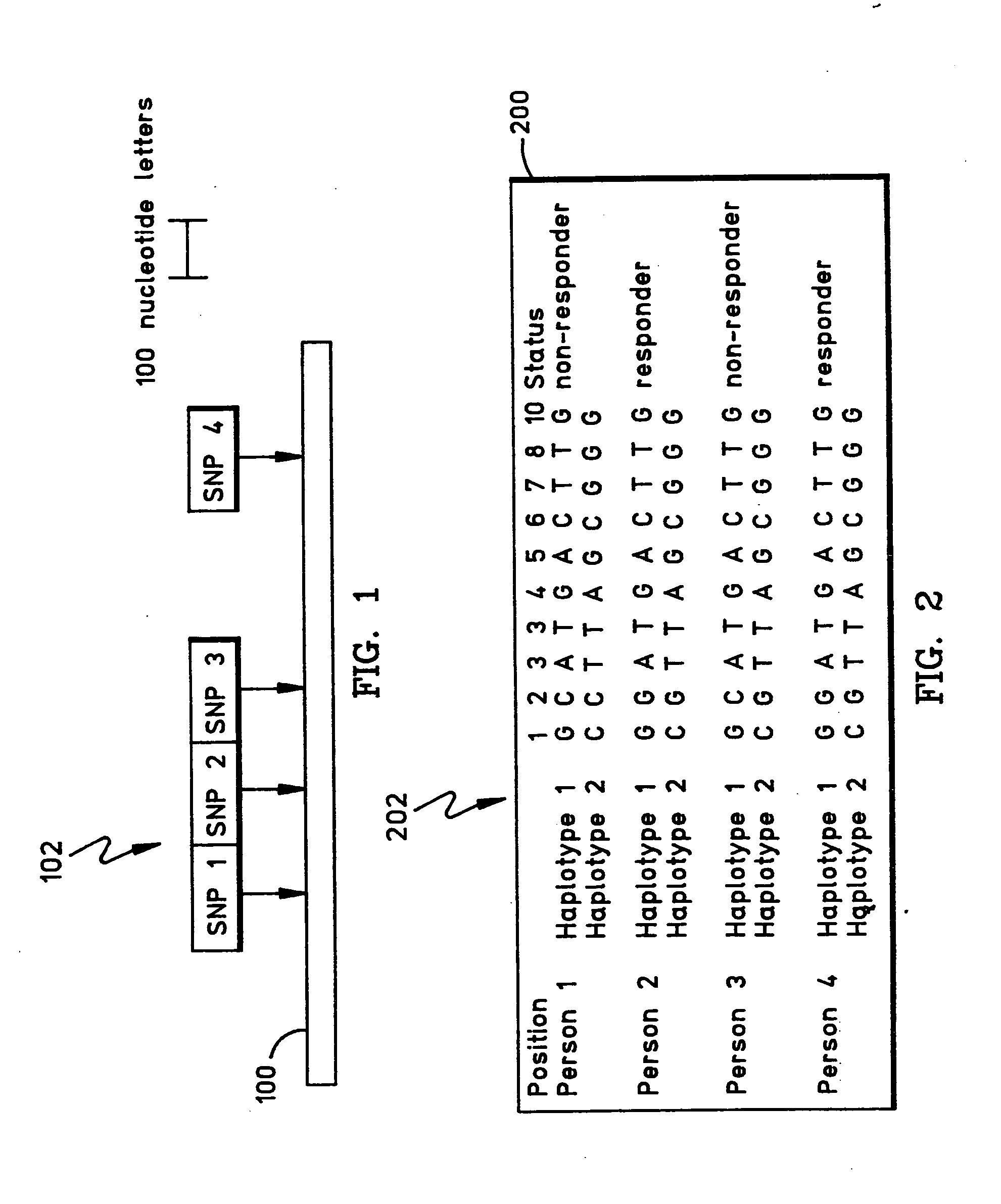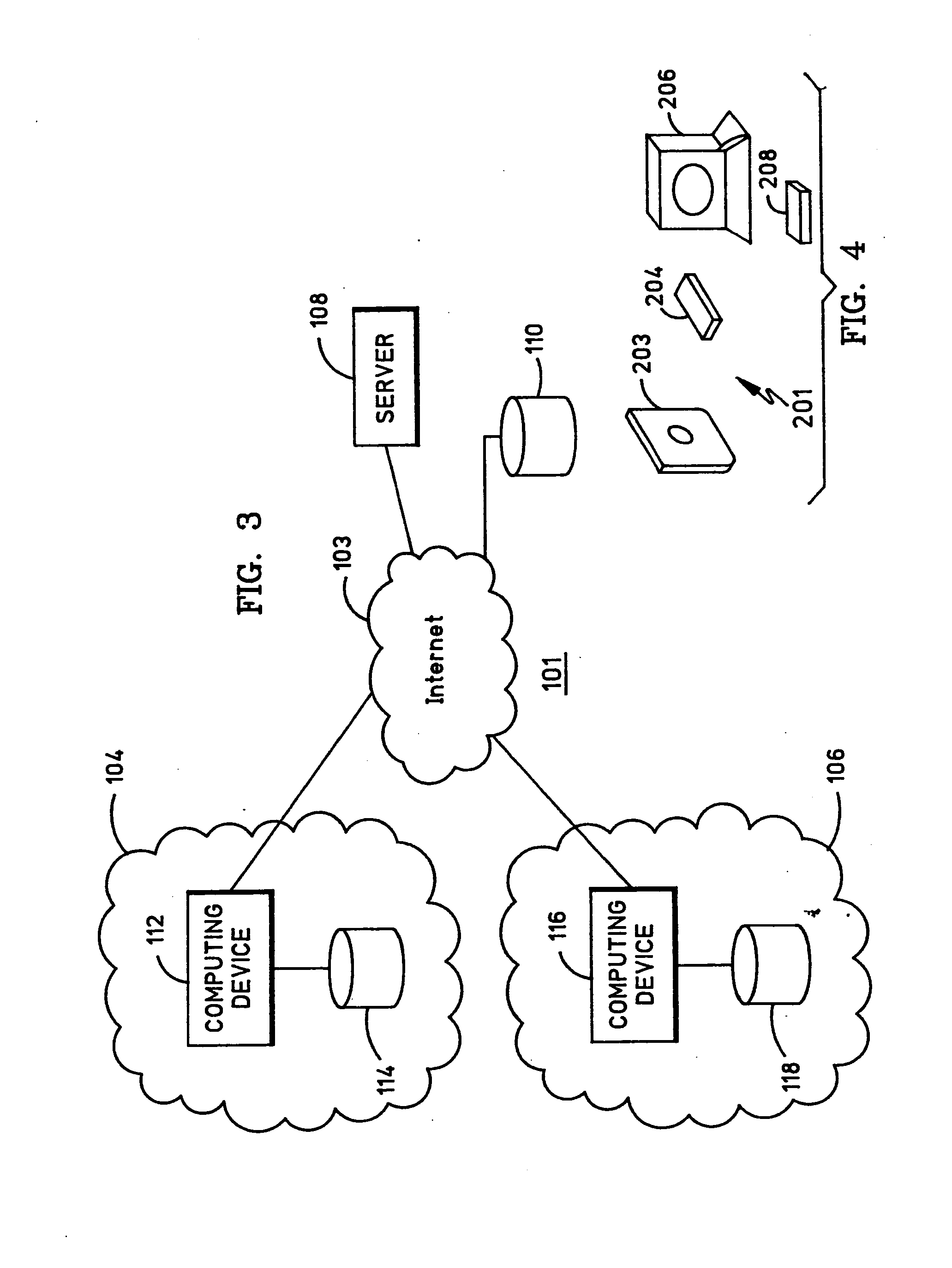Methods and apparatus for complex gentics classification based on correspondence anlysis and linear/quadratic analysis
- Summary
- Abstract
- Description
- Claims
- Application Information
AI Technical Summary
Benefits of technology
Problems solved by technology
Method used
Image
Examples
example
[0252] In the study of the association between genotypes and eye color, Table 1 is constructed for OCA3LOC109 gene.
TABLE 1Genotype / Eye ColorLightDarkTotalG11: (ATA, ATA)471158G12: (ATA, ATG)551065G13: (ATA, ACG)101G14: (ATA, GCA)29736G15: (ATA, GCG)16622G16: (ATA, GTA)347G17: (ATA, GTG)347G22: (ATG, ATG)16622G23: (ATG, ACG)101G24: (ATG, GCA)8816G25: (ATG, GCG)101020G26: (ATG, GTA)011G27: (ATG, GTG)022G44: (GCA, GCA)5611G45: (GCA, GCG)347G47: (GCA, GTG)101G55: (GCG, GCG)123G56: (GCG, GTA)011Total19982281
The Chi-square value=42.5478. Under the significant level of 0.05, when the 15 degree of freedom is 17, the critical value of χ2 is 32.2020. So, the null hypothesis H0(Ω) needs to be rejected. Then some specific genotypes are chosen based on the above table, which explain this significance.
[0253] If using 3.0 as standard, the whole table of 18 rows can be divided into two subsets: U0={G12, G24, G25, G27, G44} and V0={G11, G13, G14, G15, G16, G17, G22, G23, G26, G45, G47, G55, G56}...
PUM
 Login to View More
Login to View More Abstract
Description
Claims
Application Information
 Login to View More
Login to View More - R&D
- Intellectual Property
- Life Sciences
- Materials
- Tech Scout
- Unparalleled Data Quality
- Higher Quality Content
- 60% Fewer Hallucinations
Browse by: Latest US Patents, China's latest patents, Technical Efficacy Thesaurus, Application Domain, Technology Topic, Popular Technical Reports.
© 2025 PatSnap. All rights reserved.Legal|Privacy policy|Modern Slavery Act Transparency Statement|Sitemap|About US| Contact US: help@patsnap.com



